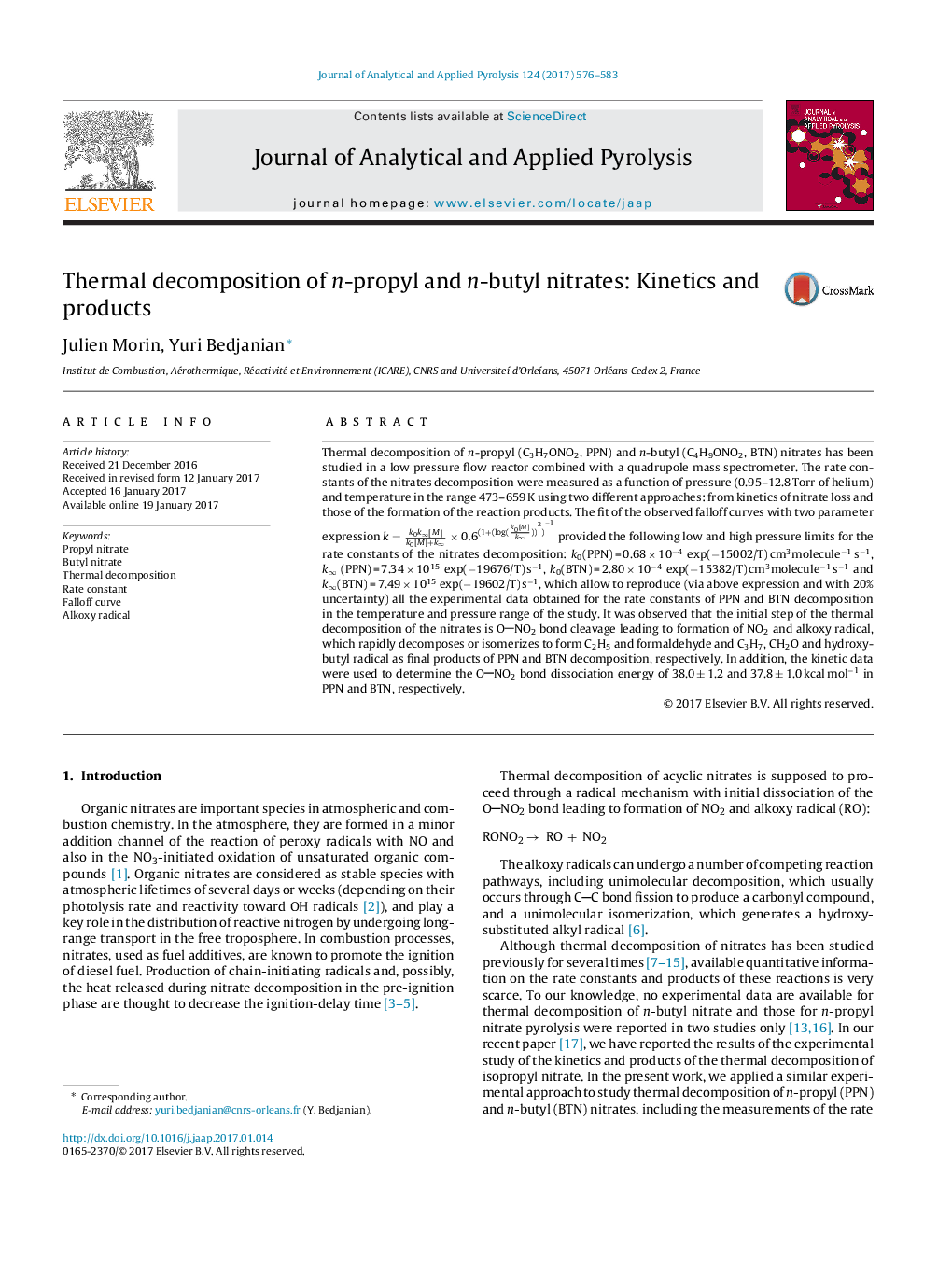| Article ID | Journal | Published Year | Pages | File Type |
|---|---|---|---|---|
| 5134630 | Journal of Analytical and Applied Pyrolysis | 2017 | 8 Pages |
â¢Thermal decomposition of n-propyl and n-butyl nitrates is studied.â¢Decomposition rate constants are measured as a function of temperature and pressure.â¢NO2, C2H5 and formaldehyde are observed as products of n-propyl nitrate decomposition.â¢NO2, C3H7, CH2O and hydroxybutyl radical are observed as products of n-butyl nitrate decomposition.â¢ONO2 bond dissociation energies in n-propyl and n-butyl nitrates are determined.
Thermal decomposition of n-propyl (C3H7ONO2, PPN) and n-butyl (C4H9ONO2, BTN) nitrates has been studied in a low pressure flow reactor combined with a quadrupole mass spectrometer. The rate constants of the nitrates decomposition were measured as a function of pressure (0.95-12.8 Torr of helium) and temperature in the range 473-659 K using two different approaches: from kinetics of nitrate loss and those of the formation of the reaction products. The fit of the observed falloff curves with two parameter expression k=k0kâ[M]k0[M]+kâÃ0.6(1+(log(k0[M]kâ))2)â1 provided the following low and high pressure limits for the rate constants of the nitrates decomposition: k0(PPN) = 0.68 Ã 10â4 exp(â15002/T) cm3moleculeâ1 sâ1, kâ (PPN) = 7.34 Ã 1015 exp(â19676/T) sâ1, k0(BTN) = 2.80 Ã 10â4 exp(â15382/T) cm3moleculeâ1 sâ1 and kâ(BTN) = 7.49 Ã 1015 exp(â19602/T) sâ1, which allow to reproduce (via above expression and with 20% uncertainty) all the experimental data obtained for the rate constants of PPN and BTN decomposition in the temperature and pressure range of the study. It was observed that the initial step of the thermal decomposition of the nitrates is ONO2 bond cleavage leading to formation of NO2 and alkoxy radical, which rapidly decomposes or isomerizes to form C2H5 and formaldehyde and C3H7, CH2O and hydroxybutyl radical as final products of PPN and BTN decomposition, respectively. In addition, the kinetic data were used to determine the ONO2 bond dissociation energy of 38.0 ± 1.2 and 37.8 ± 1.0 kcal molâ1 in PPN and BTN, respectively.
